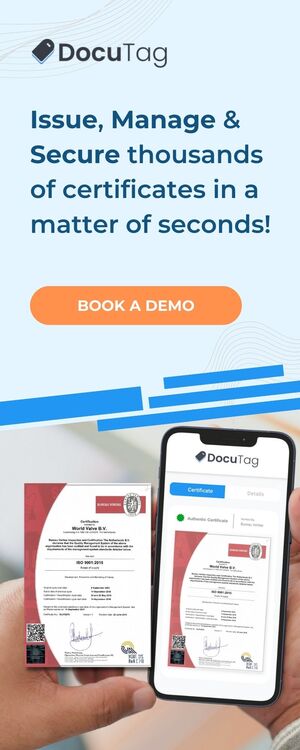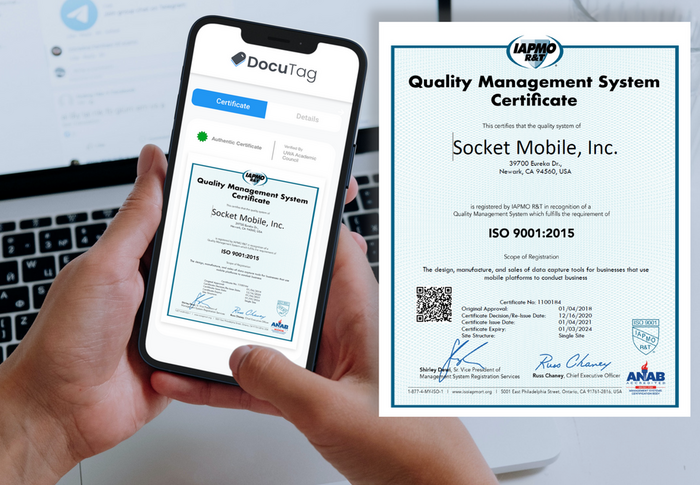Unmasking the Money-hungry Leeches: The Counterfeit Market
Counterfeits have been an on-going struggle for brands for centuries. Let it be a billion-dollar company or a small business just starting to venture out, every business is prone to counterfeits. Just take a look at the newspaper, from luxury items to consumer goods, the majority of products you see in stores and online is a big question of “IS IT FAKE?”
Meaning?
Let’s be honest, if we think about counterfeits, what comes to mind would always be “knockoffs”, “fake”, ”copy”, and “rip-offs”. To understand this term deeply we need to see by definition what the word “counterfeit” represents. According to the Cambridge Dictionary, (n.d). Counterfeit means to make something seem like the original, commonly for deceptive or illegal purposes. In simpler words, counterfeit means to copy something illegally. Now let’s understand from a lawyer’s perspective, as stated in International AntiCounterfeit Coalition (n.d.), it is a federal and state crime to manufacture and distribute goods without permission and under someone else’s name. Ordinarily, counterfeit goods are made from components that are of poor quality as they could be sold at a cheaper price. Selling a replica of a well-known brand’s product at a cheaper price would attract more potential buyers instead of selling a product with no brand. Nonetheless, the term “Counterfeiting” in practice can cover both the meaning of “Counterfeit” and “Piracy” (Organisation for Economic Co-operation and Development, 1998).
Piracy vs Counterfeiting
If you are wondering about the difference between piracy and counterfeiting, allow me to clarify it for you. As mentioned above, counterfeit focuses on duplicating the product up to a point it could be passed as an original. The logo, design, brand, name, all would be copied from an original. However, for piracy, they strive for similarity instead of it being identical. Certain elements in the product would be copied or altered, it could be the design, the name, or any elements that would mislead customers.
Where are they?
Where are these counterfeit goods sold? Without you realizing it, you could be looking at a counterfeit product right now. Look around, it could be the purse you bought at a market, a hijab your co-worker is wearing, or even your boss’s claimed-to-be USD 5, 000 watch. The fact is, counterfeit is everywhere, but it is more obvious online. Products sold on e-commerce websites are more prone to be fake as it is mostly up to the consumers’ judgement to be fooled or not. Consumers are merely holding onto the promises of sellers. Like every selfish human, as long as you get money, promises are just meaningless words. It’s not hard to find counterfeit products around. Just go to your nearest night market, walk around the city, or even go to a hypermarket. The counterfeit products are endless! You could find almost everything you desire, ranging from handbags, watches, music, cigarettes, electronics, and many more.
The top 10 counterfeited products
Just like any profitable illegal industry, it spreads like wildfire. According to the Organization for Economic Co-operation and Development (2019), the top 10 products that are counterfeited in 2016 are:

Suzanna (2016) mentioned that in the report Trade in Counterfeit and Pirated Goods: Mapping the Economic Impact, Nike is among one of the most counterfeited brands, along with Rolex, Ray-Ban, and Louis Vuitton. Fake Nike shoes are valued at a minimum of $5 and a maximum of $200, Louis Vuitton bags around $5 to $1 500, Ray-ban glasses $5 to $150, while Rolex is sold to consumers maximum $20, 000. Compared to a Rolex watch’s maximum price, which is $17.8 Million, the price of counterfeits is definitely a bargain for someone who craves luxury items but is unwilling to pay millions, but without realizing, they are wasting a huge sum of money for a low-quality product. The U.S. Customs and Border Protection Office of Trade (2018) reported that the number of the fiscal year 2018 seizures accumulated to 33,810 and $1,399,873,842 MSRP. ”The global footwear market size was valued at $365.5 billion in 2020 and is estimated to reach $530.3 billion by 2027” (Nitesh, Himanshu, Desmukh, 2020). The footwear industry alone is valued at $365.5 billion. It is not surprising how the counterfeit industry can debilitate a country’s economy.
What’s on the news?
Just in July 2020, The Ministry of Domestic Trade and Consumer Affairs Malaysia (KPDNHEP) successfully seized RM1.6 million worth of fake branded clothes with 96,915 pieces in Batu Caves, Selangor. This seizure has involved 480 distributors and traders (“Domestic Trade Ministry: Fake branded clothes worth more than RM1.6m”, 2020). The Star News mentioned that RM39,000 worth of fake goods in Johor were raided (“Domestic Trade Ministry officers seize almost RM39,000”, 2020). Across the globe, the Manchester police have seized £7.5 million Pound Sterling worth of counterfeit bags and clothes. The operation was said to be one of the biggest operations they had conducted (“Manchester police raids seize counterfeit worth £7.5m”, 2020). Meanwhile, just in China, the police had seized fake products worth $242 Million just this year. Let it be locally or globally, counterfeits are expected to reach USD1.8 Trillion by 2020 (Global Brand Counterfeiting Report, 2018).
My thoughts?
Brands need to find ways in giving their loyal customers the best experience and total confidence in buying authentic products. Whereas the government needs to do its utmost in preventing the counterfeit industry from expanding bigger than it already is. Meanwhile, customers need to realize the effects of buying counterfeit. The majority of counterfeit buyers don’t think much, “What could a piece of counterfeit clothing do?”. If only they knew. While fake buyers don’t think much, authentic buyers, on the other hand, think too much. “Is it fake?”, “Is it safe?”, “How can I know this is real?”. This is where brands need to find ways for their loyal customers to be able to differentiate the fake and the real ones. With technology today, every problem can have a solution.
Like Yin and Yang, every counterfeit can have a “counter-fake” if you get what I’m trying to say there. The negative impact of the counterfeit industry has pushed brand-owners, government, consumer groups, and technology companies to go hand in hand or single-handedly fight against the counterfeit activities. We at Luxtag also aim to contribute to this movement by offering BrandTag solution.
BrandTag (powered by the latest Blockchain technology Symbol from NEM) is a self-onboarding SaaS solution that enables businesses from all sizes to authenticate their products for consumers. Each product would be given a unique ID, this would allow customers to verify the authenticity of their product! Easy as ABC.

References
Counterfeit. (n.d.) in the Cambridge Dictionary. Retrieved from https://dictionary.cambridge.org/dictionary/english/counterfeit
Domestic Trade Ministry: Fake branded clothes worth more than RM1.6m seized in Batu Caves. (2020, July 7). Malay Mail. Retrieved from https://www.malaymail.com/news/malaysia/2020/07/07/domestic-trade-ministry-fake-branded-clothes-worth-more-than-rm1.6m-seized/1882410
Domestic Trade Ministry officers seize almost RM39,000 worth of fake goods in Johor raid. (2020, July 18). The Star. Retrieved from https://www.thestar.com.my/news/nation/2020/07/18/domestic-trade-ministry-officers-seize-almost-rm39000-worth-of-fake-goods-in-johor-raid
Global Brand Counterfeiting. (2018). An Indepth Report on The Size, Modes, Routes and Issues Underlying Counterfeiting Both through Physical As Well as Online Mediums. Retrieved from https://www.researchandmarkets.com/research/hzjb9c/global_brand?w=4I
International AntiCounterfeiting Coalition (IACC) (n.d.). What is Counterfeiting? Retrieved from https://www.iacc.org/resources/about/what-is-counterfeiting
Manchester police raids seize counterfeit bags and clothes worth £7.5m. (2020, March 12). BBC News. Retrieved from https://www.bbc.com/news/uk-england-manchester-51850360
Nitesh Chouhan, Himanshu Vig, Roshan Desmukh (2020, April). Footwear Market by Type (Athletic and Nonathletic), Material (Leather and Non-leather), End User(Men, Women, and Children), and Distribution Channel (Hypermarket/Supermarket, Specialty Stores, Brand Outlets, Online Sales Channel, and Others): Global Opportunity Analysis and Industry Forecast, 2020–2027. Retrieved from https://www.alliedmarketresearch.com/footwear-market#:~:text=Request%20Now%20!,temperatures%2C%20and%20from%20gravel%20roads.
Organisation for Economic Co-operation and Development.(1998). The Economic Impact of Counterfeiting. Retrieved from https://www.oecd.org/sti/ind/2090589.pdf
Organisation for Economic Co-operation and Development.(2019,March). Trade in Fake Goods is Now 3.3% of World Trade and Rising. Retrieved from https://www.oecd.org/newsroom/trade-in-fake-goods-is-now-33-of-world-trade-and-rising.htm
Suzanna Kim. (2016, April 19). Nike shoes among most counterfeited goods in the world. ABC News. Retrieved from https://abcnews.go.com/Business/nike-shoes-counterfeited-goods-world/story?id=38485256.
U.S. Customs and Border Protection Office of Trade. (2018). Intellectual Property Rights Fiscal Year 2018 Seizure Statistic. Retrieved from https://www.bbc.com/news/uk-england-manchester-51850360
Let your product do the work for you.
Combating counterfeiters is exhausting, we get it. That’s why we developed BrandTag. With BrandTag, your products will promote their authenticity and protect themselves from being counterfeited, with just a scan!



